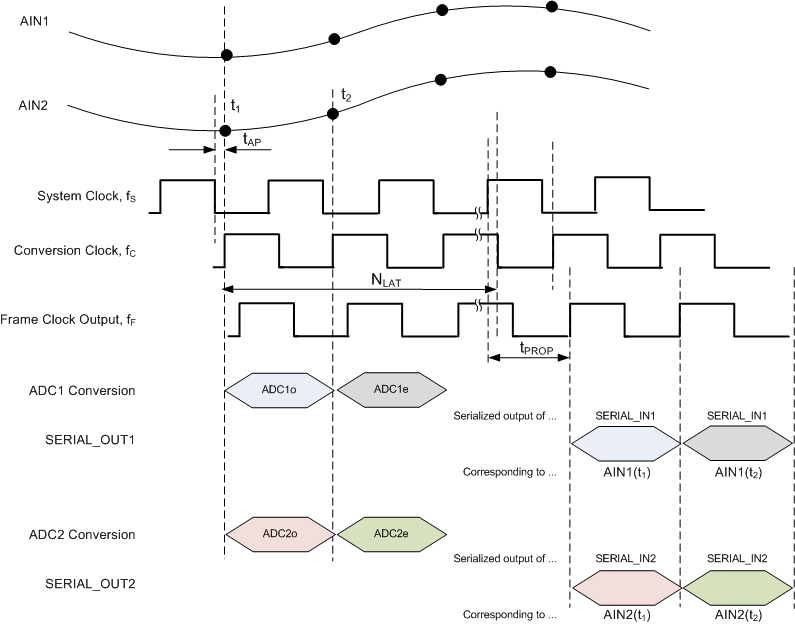JAJSFC6C May 2015 – April 2018 ADS52J90
PRODUCTION DATA.
- 1 特長
- 2 アプリケーション
- 3 概要
- 4 改訂履歴
- 5 概要(続き)
- 6 Pin Configuration and Functions
-
7 Specifications
- 7.1 Absolute Maximum Ratings
- 7.2 ESD Ratings
- 7.3 Recommended Operating Conditions
- 7.4 Thermal Information
- 7.5 Electrical Characteristics
- 7.6 Digital Characteristics
- 7.7 Timing Requirements: Signal Chain
- 7.8 Timing Requirements: JESD Interface
- 7.9 Timing Requirements: Serial Interface
- 7.10 Typical Characteristics
- 7.11 Typical Characteristics: JESD Interface
- 7.12 Typical Characteristics: Contour Plots
-
8 Detailed Description
- 8.1 Overview
- 8.2 Functional Block Diagrams
- 8.3
Feature Description
- 8.3.1 Connection of the External Inputs to the Input Pins
- 8.3.2 Input Multiplexer and Sampler
- 8.3.3 Analog-to-Digital Converter (ADC)
- 8.3.4 Device Synchronization Using TX_TRIG
- 8.3.5 Digital Processing
- 8.3.6 Data Formatting
- 8.3.7 Serializer and LVDS Interface
- 8.3.8 LVDS Buffers
- 8.3.9 JESD204B Interface
- 8.3.10 Interfacing SYNC~ and SYSREF Between the FPGA and ADCs
- 8.3.11 Clock Input
- 8.3.12 Analog Input and Driving Circuit
- 8.4 Device Functional Modes
- 8.5 Programming
- 9 Application and Implementation
- 10Power Supply Recommendations
- 11Layout
-
12Register Map
- 12.1
ADC Registers
- 12.1.1
Description of Registers
- 12.1.1.1 Register 0h (address = 0h)
- 12.1.1.2 Register 1h (address = 1h)
- 12.1.1.3 Register 2h (address = 2h)
- 12.1.1.4 Register 3h (address = 3h)
- 12.1.1.5 Register 4h (address = 4h)
- 12.1.1.6 Register 5h (address = 5h)
- 12.1.1.7 Register 7h (address = 7h)
- 12.1.1.8 Register 8h (address = 8h)
- 12.1.1.9 Register Ah (address = Ah)
- 12.1.1.10 Register Bh (address = Bh)
- 12.1.1.11 Register Dh (address = Dh)
- 12.1.1.12 Register Eh (address = Eh)
- 12.1.1.13 Register Fh (address = Fh)
- 12.1.1.14 Register 10h (address = 10h)
- 12.1.1.15 Register 11h (address = 11h)
- 12.1.1.16 Register 12h (address = 12h)
- 12.1.1.17 Register 13h (address = 13h)
- 12.1.1.18 Register 14h (address = 14h)
- 12.1.1.19 Register 15h (address = 15h)
- 12.1.1.20 Register 17h (address = 17h)
- 12.1.1.21 Register 18h (address = 18h)
- 12.1.1.22 Register 19h (address = 19h)
- 12.1.1.23 Register 1Ah (address = 1Ah)
- 12.1.1.24 Register 1Bh (address = 1Bh)
- 12.1.1.25 Register 1Ch (address = 1Ch)
- 12.1.1.26 Register 1Dh (address = 1Dh)
- 12.1.1.27 Register 1Eh (address = 1Eh)
- 12.1.1.28 Register 1Fh (address = 1Fh)
- 12.1.1.29 Register 20h (address = 20h)
- 12.1.1.30 Register 21h (offset = 21h)
- 12.1.1.31 Register 23h (register = 23h)
- 12.1.1.32 Register 24h (address = 24h)
- 12.1.1.33 Register 25h (address = 25h)
- 12.1.1.34 Register 26h (address = 26h)
- 12.1.1.35 Register 27h (address = 27h)
- 12.1.1.36 Register 28h (address = 28h)
- 12.1.1.37 Register 29h (address = 29h)
- 12.1.1.38 Register 2Ah (address = 2Ah)
- 12.1.1.39 Register 2Bh (address = 2Bh)
- 12.1.1.40 Register 2Ch (address = 2Ch)
- 12.1.1.41 Register 2Dh (address = 2Dh)
- 12.1.1.42 Register 2Fh (address = 2Fh)
- 12.1.1.43 Register 30h (address = 30h)
- 12.1.1.44 Register 31h (address = 31h)
- 12.1.1.45 Register 32h (address = 32h)
- 12.1.1.46 Register 33h (address = 33h)
- 12.1.1.47 Register 34h (address = 34h)
- 12.1.1.48 Register 35h (address = 35h)
- 12.1.1.49 Register 36h (address = 36h)
- 12.1.1.50 Register 37h (address = 37h)
- 12.1.1.51 Register 38h (address = 38h)
- 12.1.1.52 Register 39h (address = 39h)
- 12.1.1.53 Register 3Bh (address = 3Bh)
- 12.1.1.54 Register 3Ch (address = 3Ch)
- 12.1.1.55 Register 43h (address = 43h)
- 12.1.1
Description of Registers
- 12.2
JESD Serial Interface Registers
- 12.2.1
Description of JESD Serial Interface Registers
- 12.2.1.1 Register 70 (address = 46h)
- 12.2.1.2 Register 73 (address = 49h)
- 12.2.1.3 Register 74 (address = 4Ah)
- 12.2.1.4 Register 75 (address = 4Bh)
- 12.2.1.5 Register 77 (address = 4Dh)
- 12.2.1.6 Register 80 (address = 50h)
- 12.2.1.7 Register 81 (address = 51h)
- 12.2.1.8 Register 82 (address = 52h)
- 12.2.1.9 Register 83 (address = 53h)
- 12.2.1.10 Register 85 (address = 55h)
- 12.2.1.11 Register 115 (address = 73h)
- 12.2.1.12 Register 116 (address = 74h)
- 12.2.1.13 Register 117 (address = 75h)
- 12.2.1.14 Register 118 (address = 76h)
- 12.2.1.15 Register 119 (address = 77h)
- 12.2.1.16 Register 120 (address = 78h)
- 12.2.1.17 Register 134 (address = 86h)
- 12.2.1.18 Register 135 (address = 87h)
- 12.2.1.19 Register 136 (address = 88h)
- 12.2.1.20 Register 137 (address = 89h)
- 12.2.1.21 Register 138 (address = 8Ah)
- 12.2.1
Description of JESD Serial Interface Registers
- 12.1
ADC Registers
- 13デバイスおよびドキュメントのサポート
- 14メカニカル、パッケージ、および注文情報
8.3.7 Serializer and LVDS Interface
By default, each serializer takes in one SERIAL_IN word and performs a parallel-to-serial conversion. This mode is referred to as the 1X data rate mode. In the 1X data rate mode, all 16 LVDS pairs are active and each pair corresponds to the data coming out of one ADC. In the 2X data rate mode (set using the LVDS_RATE_2X bit), the data from a pair of ADCs (two SERIAL_IN words) is packed into the same serial stream. In 2X mode, half the LVDS pairs are idle and can be powered down. The 2X data rate mode causes the LVDS interface to run at twice the rate but results in power saving. See the Timing Requirements: Signal Chain table for speed restrictions when using the 1X and 2X data rate modes.
The LVDS interface is a clock-data-frame (CDF) format, and has a frame clock and a high-speed bit clock in addition to the serial data lines.
The frequency of the bit clock with respect to the conversion clock frequency depends on the serialization factor (set using the SER_DATA_RATE bits), as shown in Table 10. Note that the serialized data are meant to be captured on both the rising and falling edges of the bit clock. Thus, the serialized data rate is twice the bit clock frequency.
Table 10. Bit Clock Rate Relationship to the Conversion Clock and System Clock Rates
| SERIALIZATION FACTOR | DATA RATE MODE | BIT CLOCK RATE
(fB in Terms of fC) |
BIT CLOCK RATE (fB in Terms of fS) | ||
|---|---|---|---|---|---|
| 16-INPUT MODE | 32-INPUT MODE | 8-INPUT MODE | |||
| 10 | 1X | 5 × fC | 5 × fS | 5 × fS | 2.5 × fS |
| 2X | 10 × fC | 10 × fS | 10 × fS | 5 × fS | |
| 12 | 1X | 6 × fC | 6 × fS | 6 × fS | 3 × fS |
| 2X | 12 × fC | 12 × fS | 12 × fS | 6 × fS | |
| 14 | 1X | 7 × fC | 7 × fS | 7 × fS | 3.5 × fS |
| 2X | 14 × fC | 14 × fS | 14 × fS | 7 × fS | |
| 16 | 1X | 8 × fC | 8 × fS | 8 × fS | 4 × fS |
| 2X | 16 × fC | 16 × fS | 16 × fS | 8 × fS | |
The relationship of the frame clock frequency to the conversion clock frequency for the three input modes is as shown in Table 11. The relationship of the frame clock frequency to the system clock (and conversion clock) frequencies is the same between the 1X and 2X data rate modes.
Table 11. Relation of Frame Clock Rate to the Conversion Clock and System Clock Rates
| ANALOG INPUT MODE
(Number of Channels) |
FRAME CLOCK RATE
(fF in Terms of fC) |
FRAME CLOCK RATE
(fF in Terms of fS) |
DATA RATE MODES SUPPORTED |
|---|---|---|---|
| 16 | fC | fS | 1X, 2X |
| 32 | 0.5 × fC | 0.5 × fS | 1X |
| 8 | fC | 0.5 × fS | 1X, 2X |
The serialization schemes for the various modes are illustrated in Figure 64 to Figure 68. Note that although the signals marked ADCx Conversion in Figure 64 to Figure 68 represent a multi-bit digital word, the SERIAL_OUTx signals are actually serialized representations of the correspondingly colored signals. For example, the blue-colored section in the SERIAL_OUT1 signal in Figure 64 contains the serial stream of data that originated from the word corresponding to ADC1o.
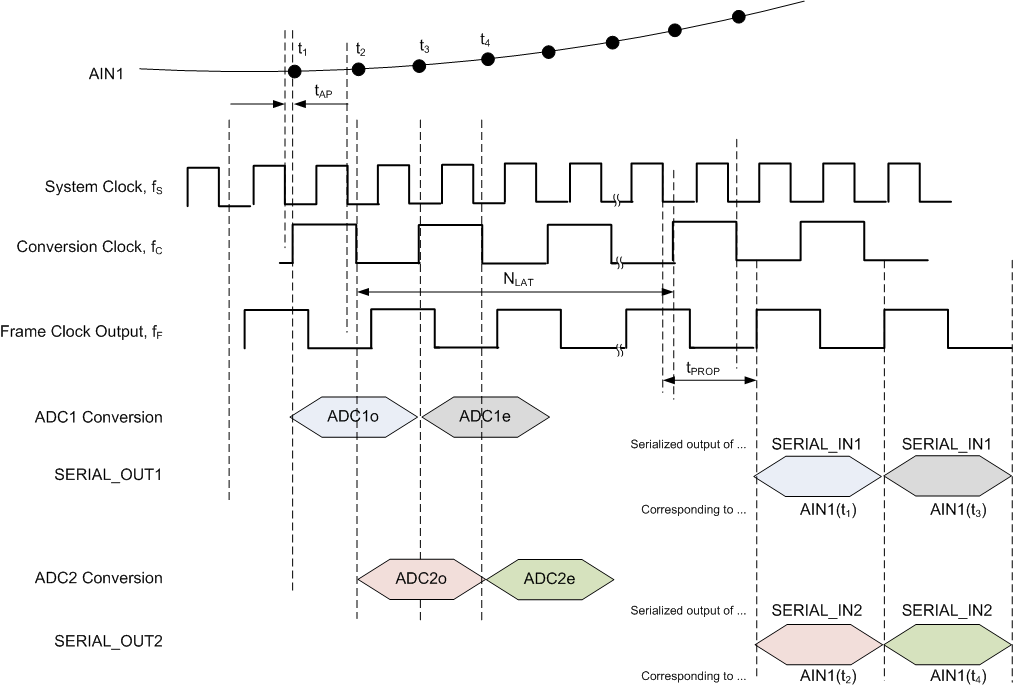 Figure 65. ADC to Output Mapping in 8-Input, 1X Mode in LVDS Interface Mode
Figure 65. ADC to Output Mapping in 8-Input, 1X Mode in LVDS Interface Mode
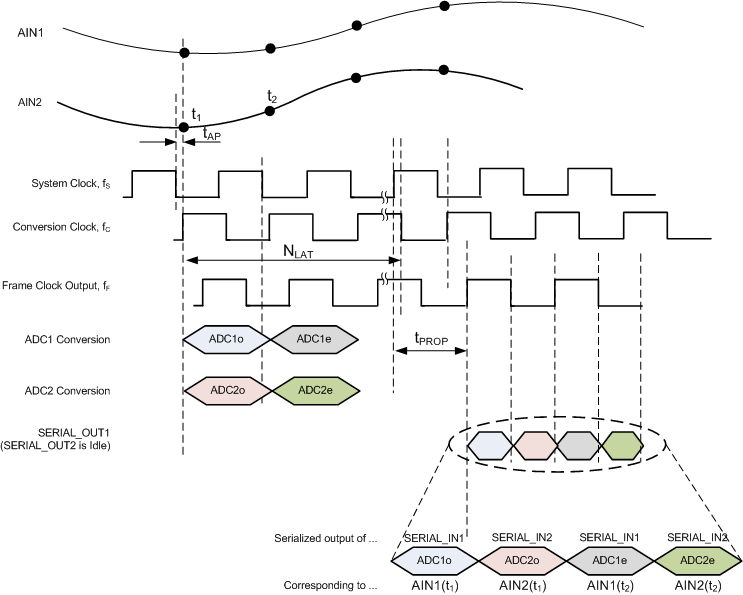 Figure 66. ADC to Output Mapping in 16-Input, 2X Mode in LVDS Interface Mode
Figure 66. ADC to Output Mapping in 16-Input, 2X Mode in LVDS Interface Mode
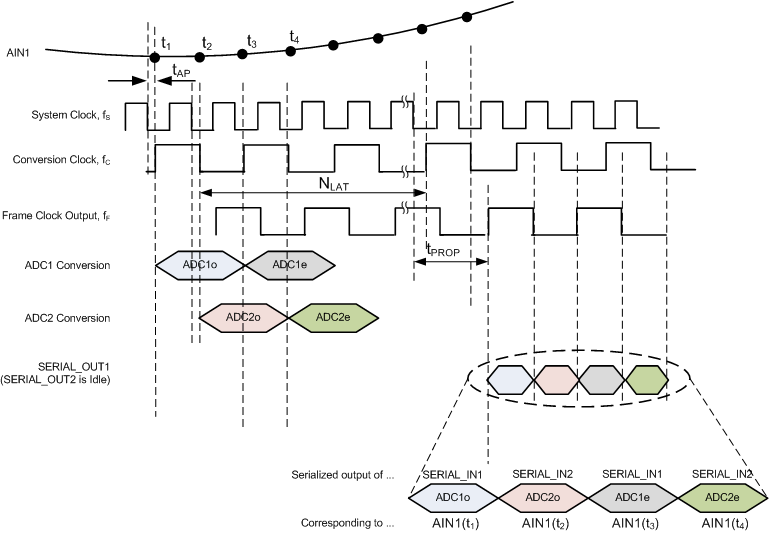 Figure 67. ADC to Output Mapping in 8-Input, 2X Mode in LVDS Interface Mode
Figure 67. ADC to Output Mapping in 8-Input, 2X Mode in LVDS Interface Mode
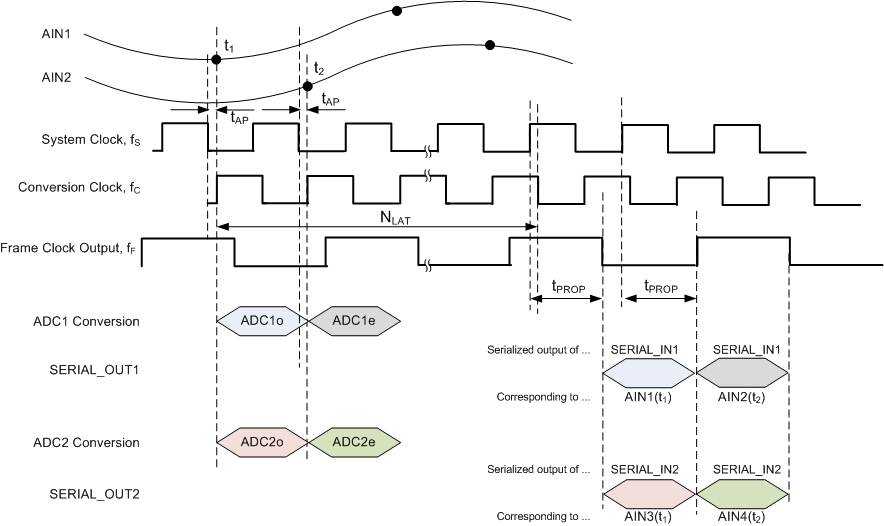 Figure 68. ADC to Output Mapping in 32-Input, 1X Mode in LVDS Interface Mode
Figure 68. ADC to Output Mapping in 32-Input, 1X Mode in LVDS Interface Mode
The mapping of the subsequent-numbered ADC signals to subsequent-numbered SERIAL_OUT signals follows the same pattern as indicated previously.
The serialized stream in SERIAL_OUT is a serialized representation of SERIAL_IN, which is the input word coming into the serializer. By default, serialization is done LSB-first. By setting the MSB_FIRST bit, serialization can be set to MSB-first.
The alignment of the frame clock, bit clock, and the serialized output data is illustrated in Figure 1 for 16-input mode where the serialization factor is set to 12 bit, serialization is LSB-first, and the data rate is set to 1X mode.
Another case is shown in Figure 69 for 16-input mode. Here, the serialization factor is set to 14 bit, serialization is MSB-first, and the data rate is set to 2X mode.
 Figure 69. LVDS Output Signals Timing Diagram in 16-Input Mode with
Figure 69. LVDS Output Signals Timing Diagram in 16-Input Mode with
14-Bit Serialization, MSB-First, 2X Data Rate Mode
The serialized signals come out on the DOUT pins as indicated in Table 12. The buffers marked Idle can be powered down using the appropriate register bits to save power.
Table 12. Mapping of the Serialized Outputs to the DOUT Pins
| LVDS OUTPUT PIN (DOUT) | OUTPUT SIGNAL | |
|---|---|---|
| 1X DATA RATE MODE | 2X DATA RATE MODE | |
| DOUT1 | SERIAL_OUT1 | SERIAL_OUT1 |
| DOUT2 | SERIAL_OUT2 | SERIAL_OUT3 |
| DOUT3 | SERIAL_OUT3 | SERIAL_OUT5 |
| DOUT4 | SERIAL_OUT4 | SERIAL_OUT7 |
| DOUT5 | SERIAL_OUT5 | Idle |
| DOUT6 | SERIAL_OUT6 | Idle |
| DOUT7 | SERIAL_OUT7 | Idle |
| DOUT8 | SERIAL_OUT8 | Idle |
| DOUT9 | SERIAL_OUT9 | SERIAL_OUT9 |
| DOUT10 | SERIAL_OUT10 | SERIAL_OUT11 |
| DOUT11 | SERIAL_OUT11 | SERIAL_OUT13 |
| DOUT12 | SERIAL_OUT12 | SERIAL_OUT15 |
| DOUT13 | SERIAL_OUT13 | Idle |
| DOUT14 | SERIAL_OUT14 | Idle |
| DOUT15 | SERIAL_OUT15 | Idle |
| DOUT16 | SERIAL_OUT16 | Idle |
